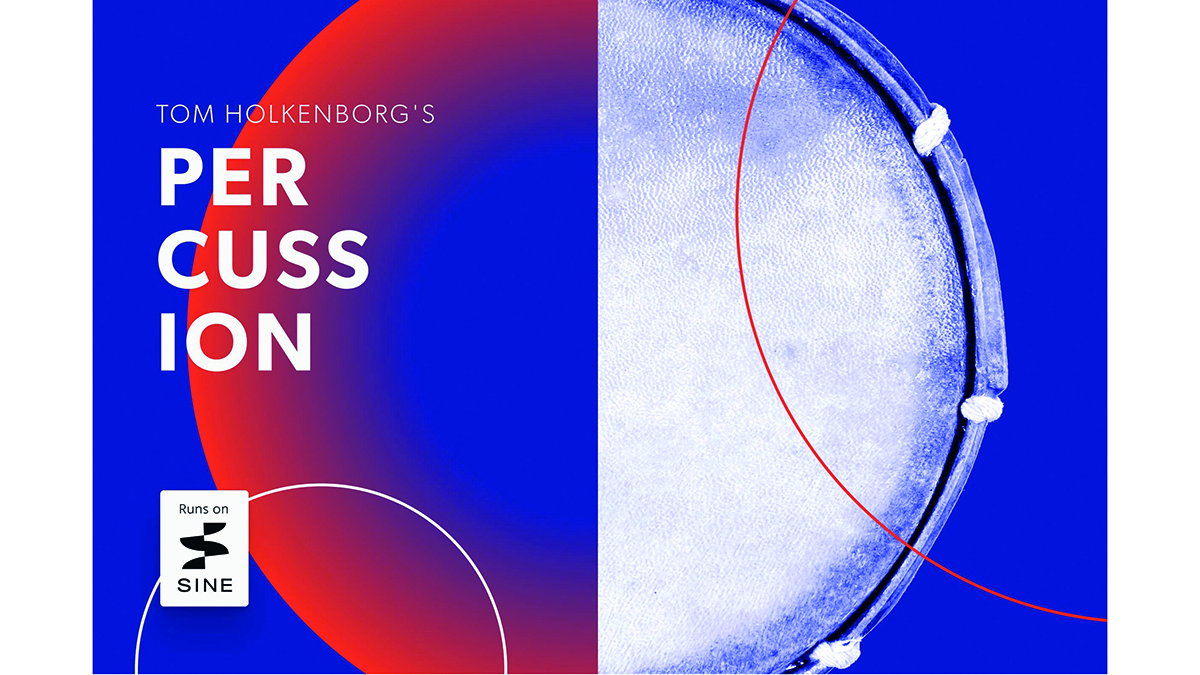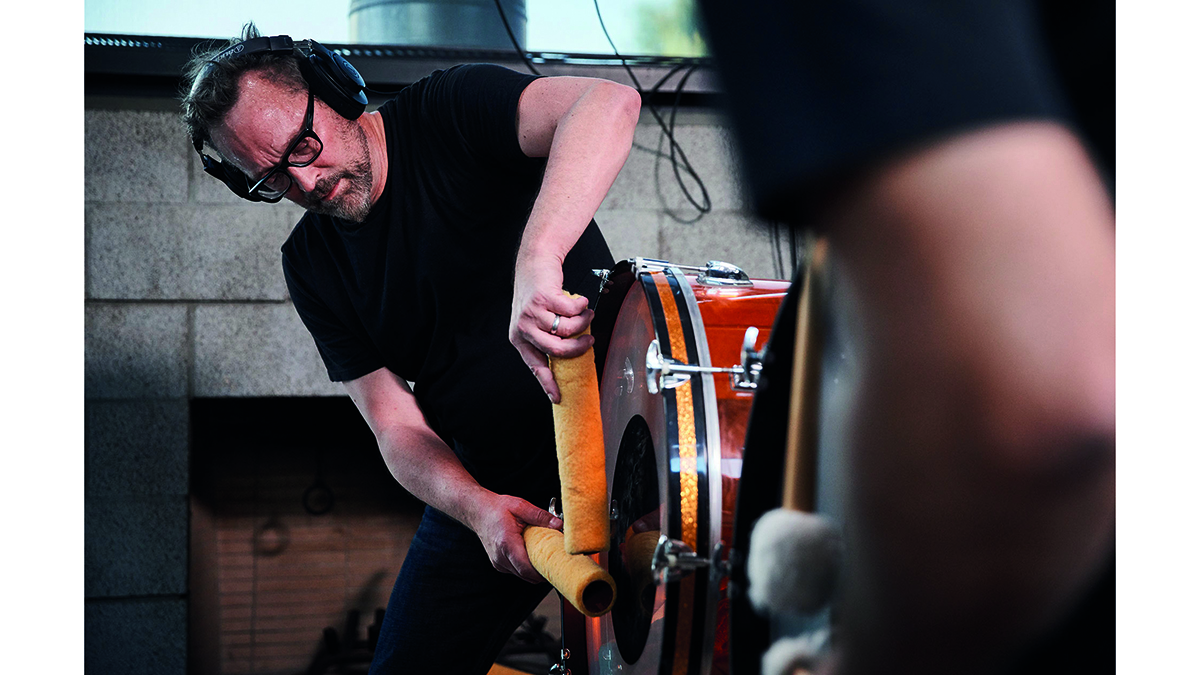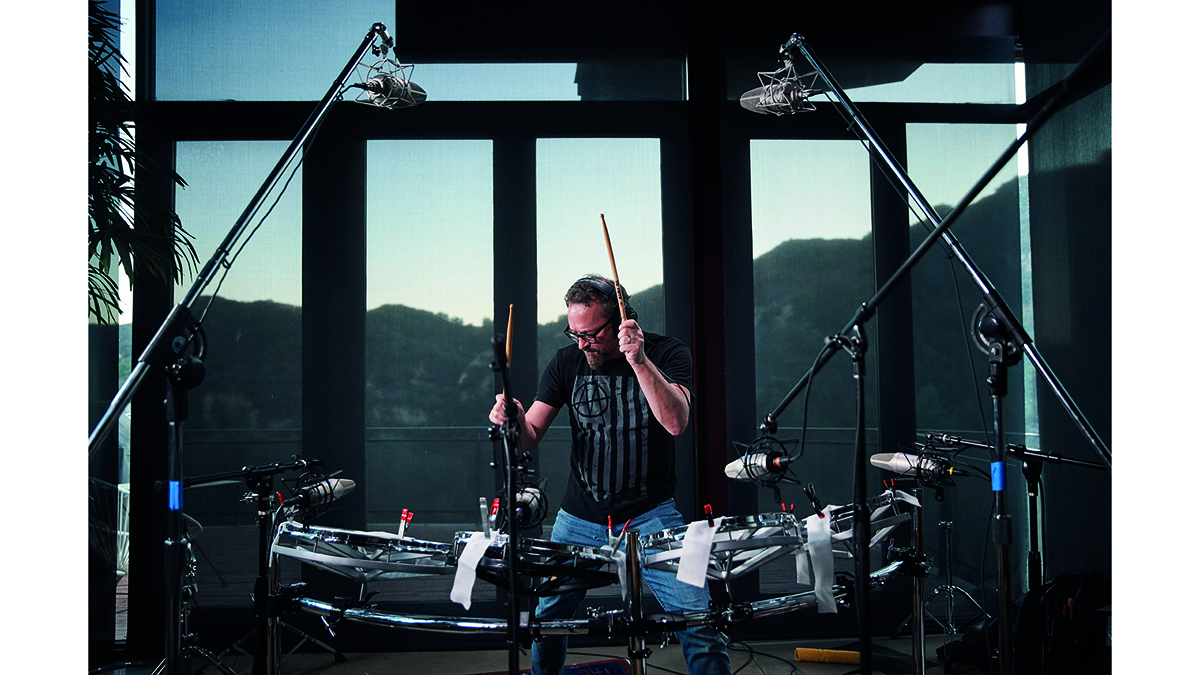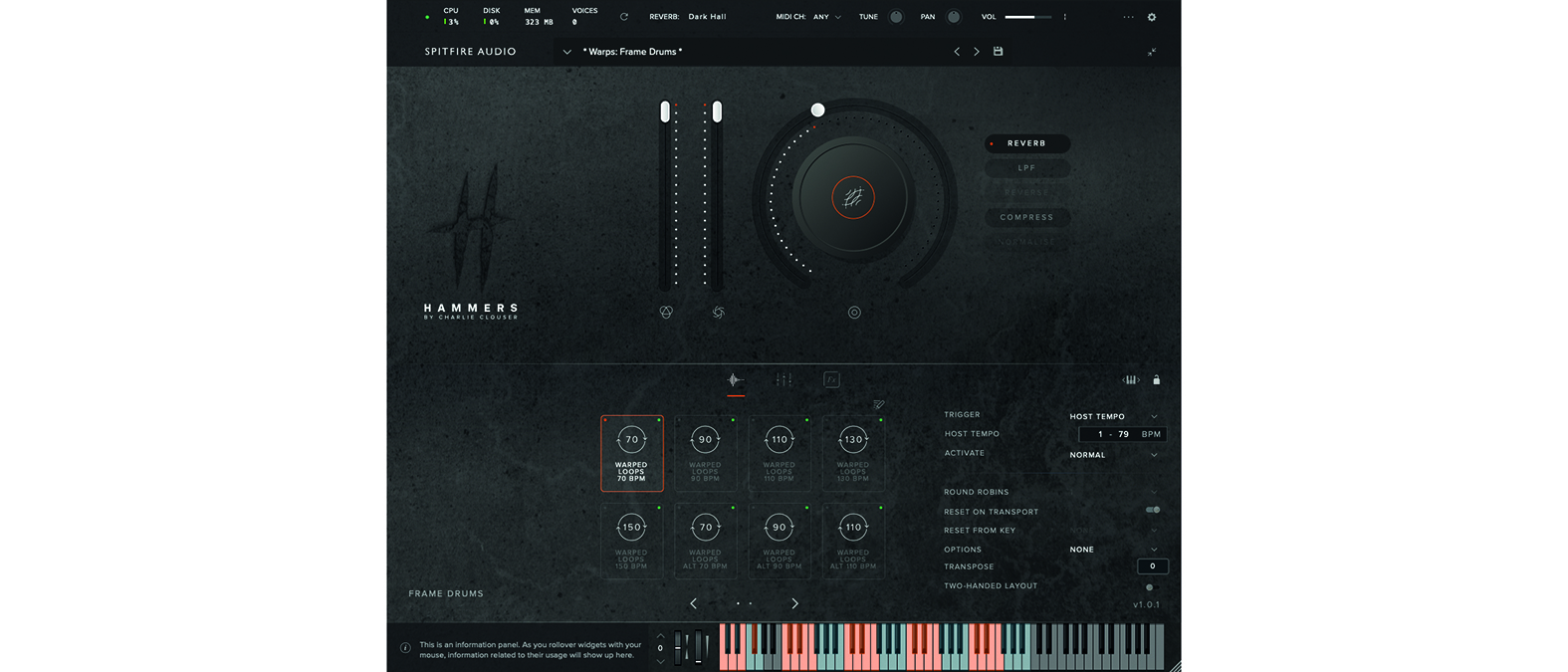MusicRadar Verdict
Hammers offers an excellent selection of percussion samples which are a great extension of the more usual kit-based components found elsewhere.
Pros
- +
Great sounding samples.
- +
Distinctive cinematic percussion palette.
- +
Looped content is highly effective.
- +
Warped section gives instant intensity.
- +
Real-time control elements are a boon.
Cons
- -
Limited selection of percussion sounds.
- -
Loop section could be more substantial.
MusicRadar's got your back
Spitfire Audio Hammers: What is it?
Creating drums sounds for cinematic textures requires great drum samples, with a heavy layer of signal processing. This is where Spitfire’s latest product could take the hard work out of your next project, with these unique hits and loops, driven to brutal distraction.
Clouser’s simmering pot of stylistic percussion-based sound design led Spitfire to his door
Charlie Clouser is a Hollywood composer best known for the angsty scores which accompany the Saw film franchise. He started musical life as a drummer, before becoming a keyboard player and programmer with the band Nine Inch Nails.
Also known for their processed and dark musical tendencies, his simmering pot of stylistic percussion-based sound design led Spitfire Audio to his door, with a view to creating a software instrument to host percussion sounds for the current and next generation of cinematic composers.
Spitfire Audio Hammers: Performance and verdict
Hammers is based around Spitfire’s very own virtual instrument, in a format that has become familiar. Instrument selection occurs at the very top, while realtime controls default to the upper part of the instrument GUI, where two familiar faders control expression and timbral/dynamic volume.
The now-familiar Spitfire ‘knob’ can be assigned to one of five control elements, reverberation, low-pass filter, reverse, compression and normalise, although not all are available with all instruments. This section also allows the user to see what’s occurring with articulation options, which may also be automated via key-press.
The Spitfire player invites a conversation, in much the same way that Marmite-flavoured crisps do
There’s also access to the numerous mic or bounced signals, for greater control of your initial sound construct. Spitfire has generated great overall stereo mixes, great for anyone running low on RAM; the more signal paths you load at once, the greater the RAM demands.
The Spitfire player often invites a conversation, in much the same way that Marmite flavoured crisps do. The player window is scalable, with an ability to hide or show controls. It’s not generally a problem if working with a desktop screen, but it could easily eat up a laptop’s screen space.
Initial instruments
While Hammers is exclusively percussion-based, there is great diversity in content colour. The start point for the library is the initial recording of eight different drums or instrument types. These begin with bass drums and surdos, rising through the pitched ranks to toms, roto-toms, darbukas and frame drums. Snare drums and even a section titled Scrap Metal round it off.

• OT Tom Holkenborg’s Percussion
Great sounding drums includes plenty of big drums, including marching band-style ensembles.
• Sonivox Big Bang Cinematic
Brimming with huge wallops, perfect for your cinematic tracks.
The basic level of sample, of which there are 118,744, begins with individual hits and strikes. These include articulations of single hits, flams, ruffs and rolls. The default Ensemble patch is useful for loading a clean opening set, should you wish to trigger and program the sounds yourself. It actually makes an ideal place to begin building a groove, which is interestingly the way that Clouser likes to begin his own scoring work.
By having access to so many instruments simultaneously, it bypasses one of the criticisms often levelled at Spitfire’s door: the lack of multi-timbral operation within its own plugin. Granted, you won’t be able to mix and match the articulations in this Ensemble setting, but you can at least get going, and with some clever programming, get around many issues.

For even greater control, loading individual drum instruments is an ideal route, at which stage you have access to solo hits, or hits with multiple players. Each drum gets different articulations; some use just sticks, while many use brushes, or indicate where the drum is being struck.
The darbuka is an excellent case in point. Originating from Egypt and Turkey, it provides a pleasant blend of high frequency slap from the skin/head, with plenty of hi-mid content from the body of the drum. The timbre shifts according to the strength of the strike, and location of hit, and with so many hits on offer, building a beautiful groove with a little help from your DAW feels very easy, intuitive and creative. There is a 2-player option here too, beautifully imaged across the stereo image.

Accompanying the individual hits is a compendium of live loops, all played and constructed by Clouser, with two further session players. The loops are inspiring, inviting the user to explore the realtime controls for driving energy, or upping the feel with effects.
For more acoustic work, these loops are a real boon, and can easily be treated within the DAW, in order to create darker colours, much like the sounds that Charlie Clouser is renowned for. However, if you lack confidence in this pursuit, Hammers comes quickly to your aid, with a large collection of Warped loops, which take on that Clouser identity. These exude cinematic colour, providing the perfect backdrop for an energetic or pounding track.
Hammered!
Hammers is a great collection of drum and percussion sounds, offering single articulations and some excellent looped content. It is limited in overall percussive colour, but offers a unique and distinguished palette which is more left-field. What you do get is an excellent package of great sounds, but we feel that you’ll extend the life cycle of Hammers by placing it alongside other percussion or drum packages
MusicRadar verdict: Hammers offers an excellent selection of percussion samples which are a great extension of the more usual kit-based components found elsewhere.
Spitfire Audio Hammers: The web says
"If you’re a film or TV composer who can’t have too many high-quality percussion instruments in your collection, and you like to work fast, then this will be a great addition to your toolbox."
SoundBytes
Spitfire Audio Hammers: Hands-on demos
Spitfire Audio
Sample Library Review
Daniel James
Spitfire Audio Hammers: Specifications
- 118,744 samples
- 100GB download size
- Mac OS X 10.10 to OS X 11 Minimum: 2.8GHz i5 (quad-core), 8GB RAM recommended: 2.8GHz i7 (six-core), 16GB RAM Intel and M1 Macs supported 64-bit DAW required (32 bit DAWs not supported)
- Windows 7, 8, or 10 (latest Service Pack, 64-bit) Minimum: Intel Core 2.8GHz i5 (quad-core) or AMD Ryzen 5, 8GB RAM recommended: Intel 2.8GHzi7 (six-core) or AMD R7 2700, 16GB RAM 64-bit DAW required
- CONTACT: Spitfire Audio
Computer Music magazine is the world’s best selling publication dedicated solely to making great music with your Mac or PC computer. Each issue it brings its lucky readers the best in cutting-edge tutorials, need-to-know, expert software reviews and even all the tools you actually need to make great music today, courtesy of our legendary CM Plugin Suite.
“Delivers streamlined DAW integration with an excellent hammer action keyboard”: Arturia Keylab 88 Mk3 review
“I have an original 909 – every time I try to use it I feel like I’m ruining it”: House hero Riva Starr on his studio essentials and his love of analogue synths
“A synthesizer that is both easy to use and fun to play whilst maintaining a decent degree of programming depth and flexibility”: PWM Mantis review











